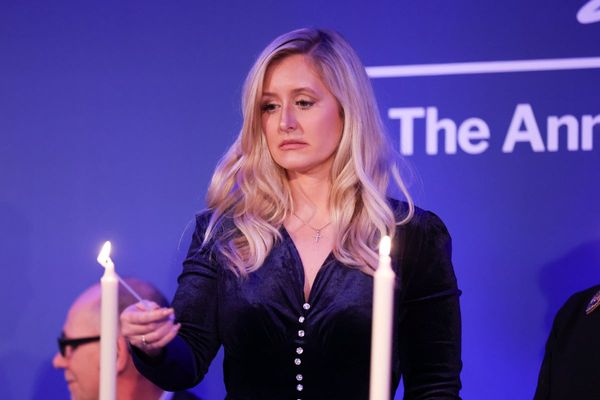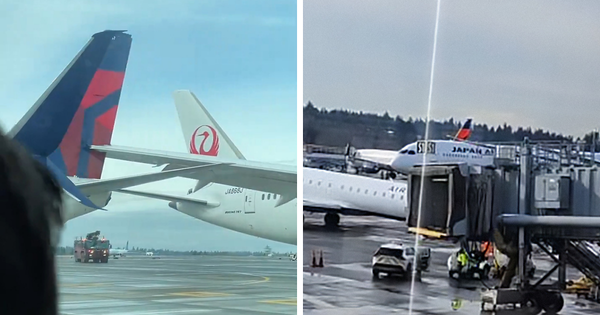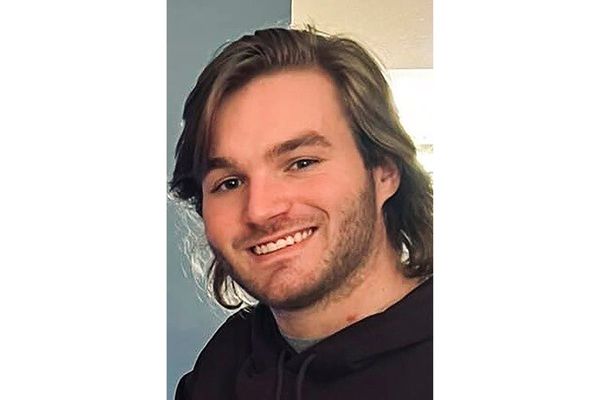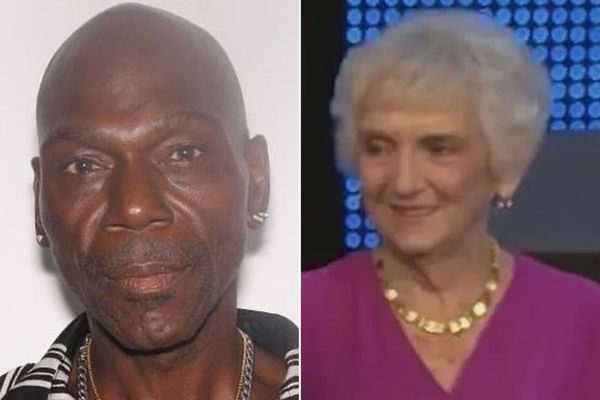On New Year's Eve 20 years ago Kirsty Bentley went missing. Earlier this month, Kurt Bayer profiled the case ahead of the anniversary marking the tragic disappearance.
The cold case file amounts to more than 70 archive boxes containing 400 folders of documents and evidence.
Twenty years since murdered Ashburton schoolgirl Kirsty Marianne Bentley went missing while walking her dog, it remains one of New Zealand's highest-profile murder mysteries. It still fascinates, chills and divides mid-Cantabrians. Locals are quick to offer a theory or toss out a name of a likely suspect.
In the late 90s, genetic crime solving was in its infancy.
But now, Detective Inspector Greg Murton believes that advances in modern DNA testing techniques could crack open the case.
/arc-anglerfish-syd-prod-nzme.s3.amazonaws.com/public/VQ7BFDG56VGJJOTZJZX3FB7UJY.jpg)
The dog leash found around the dog's neck — tying her to a tree at the Ashburton riverbank 50km away from where Kirsty's body was later found — along with underwear found nearby will be included in new tests to be carried out by scientists at the Institute of Environmental Science and Research, New Zealand's Crown Research Institute, in Auckland.
"The case is still open and being investigated," Murton tells the Herald on Sunday
"With the new forensic testing we are hopeful to get the right result for the family even after all these years. There have been other cases recently where murders that are 20 years old have been solved through DNA or other reasons, so we're forever hopeful."
DNA profiling — a process of identifying a specific pattern of DNA from a person or sample of bodily tissue — has revolutionised forensic science and global crime investigation. In New Zealand, there have been several high-profile examples where DNA has nailed criminals decades after they thought they were scot-free.
In 1995, in a joint project involving police and ESR, New Zealand created the National DNA Profile Databank. It involved the collection of DNA profiles from convicted offenders and volunteers onto a central database that is matched against DNA profiles obtained from unsolved crimes in an attempt to "identify any individual that could be linked to an offence through biological material left at the crime scene".
/arc-anglerfish-syd-prod-nzme.s3.amazonaws.com/public/P2E42AZOZ5HTVL55MU7UIMVFR4.jpg)
Testing has advanced since and the new techniques will be applied to the evidence from Operation Kirsty.
In 2002, Jules Mikus was jailed for life after DNA evidence linked him to the savage rape and murder of Napier schoolgirl Teresa Cormack 15 years earlier.
It was also the downfall of Jarrod Allan Mangels. After a drunken Nelson night out in 2003, Mangels was asked to give a blood sample. His DNA was later found to match the DNA found on nail clippings from Maureen McKinnel who was strangled at her Arrowtown home on Boxing Day 1987 and dumped naked over the Arrow River Bridge.
Murton, who took charge of the unsolved crime file case in 2014, is hopeful for some test results by the end of the year. But he cautioned that final answers still may be some way off — if they are ever found.
"It's such a fine level of testing. [ESR] have to interpret those results and then look at where we go from there," he says. "More sensitive testing methods are great but at the end of the day we still need a suspect to test this against."
/arc-anglerfish-syd-prod-nzme.s3.amazonaws.com/public/SUIHA27YYJFKTF43S5USXUPARU.jpg)
Over the years, hundreds of local men have been spoken to by police during Operation Kirsty, including her brother John and ex-Royal Navy sailor father Sid, whose movements on New Year's Eve were vague, and whose story later changed. Both said police treated them as suspects and vehemently denied any involvement, with Sid doing so right up to his death in June 2015, aged 64.
One theory doing the rounds was that John had killed his sister and that his father helped him dump the body. He has said detectives appeared to think he was jealous of his sister because she had a boyfriend.
In March last year, Murton confirmed he was looking at double Ashburton Work and Income killer Russell Tully as a possible suspect. The former local diesel mechanic was ruled out after Murton quizzed him behind bars and came away satisfied with his alibi.
Kirsty's mother Jill Peachy is kept up-to-date on the case by Murton. She's aware of the new DNA testing and that it's helped catch killers years down the line. But she long ago ceased holding her breath.
/arc-anglerfish-syd-prod-nzme.s3.amazonaws.com/public/2QTQNXIWC5EU3E4BHWCSXIAXNI.jpg)
"If it's going to be, it will," she tells the Herald on Sunday.
"I just hope the killer is sweating that one day they will be caught.
"I don't have a face to hate, nor a reason to assess the 'why?' One day 20 years ago, I waved a happy bye-bye to my girl and then she was gone. There's been nothing to show me what happened."
December 31, 1998, had been a balmy day in town. Kirsty — a well-rounded, sensible, giggly girl who loved drama studies, poetry, choir singing, the Backstreet Boys, her boyfriend and friends — had been lounging in the library. She then did some shopping with best friend Lee-Anne Jellyman, grabbing lunch at McDonald's, and popping in to see a friend at the dairy.
She would never know it, but she'd done better than she expected in her fifth-form exams and was loving what was turning out to be a long, hot summer. A pool party was being planned for her 16th birthday on January 18. She was bursting with excitement at the prospect of boyfriend Graeme Offord coming for dinner that night, with plans for him to stay over.
/arc-anglerfish-syd-prod-nzme.s3.amazonaws.com/public/IVFA2IBOXRFXHGLCHF56EAHUJY.jpg)
At about 2.30pm, she arrived back at the family's South St home before taking her black labrador-cross Abby for a stroll while her brother John, then 19, listened to music in his bedroom. He remembers thinking Kirsty had been gone for a while but didn't think too much of it.
"These sorts of things aren't supposed to happen, so the idea of something bad happening to Kirsty was not even in my mind," he says. "Mum came home and I asked her about it, expecting her to know. When she had a puzzled look on her face, I was a bit surprised."
But on arriving home, mother Jill felt something was wrong. Over the previous few months, she'd felt an unexplained dread that "somehow my little girl was at risk".
Quizzing John, she noticed Abby's dog lead was missing from the stool by the back door where Kirsty usually dropped it.
/arc-anglerfish-syd-prod-nzme.s3.amazonaws.com/public/YZKQWXXGHFD6TA2JC5PQ4SDKGY.jpg)
Jill headed towards the river, and as panic swept over her, she started running. But as she got near Abby's favourite swimming hole, she turned around and ran home.
The Herald on Sunday this week retraced Kirsty's steps on that fateful afternoon. The Bentleys' modest red brick home is just two doors down from the broad Chalmers Ave, where the teen turned left with Abby in tow and wandered just a few hundred metres down the road that runs into a dead-end for motorists, and into the riverbank. The river tracks have since been upgraded for mountainbikes and include one-way loops. Just off the trails, the bush is dense and prickly with blackberry and fallen trees.
/arc-anglerfish-syd-prod-nzme.s3.amazonaws.com/public/55CDNVCPZZEX7NMMOPWK5VYNWI.jpg)
When Kirsty's father arrived home at around 6pm, things were not looking good. He immediately thought they should phone the police and lodge a missing person report.
The Bentleys, along with friends and police staff, started searching the neighbourhood, building yards, the northern riverbank and its paths.
As darkness fell, so did the mood. Kirsty had left home only wearing light clothes — a black tank top with a white butterfly-patterned blue sarong and black Colorado shoes with white soles.
She was nowhere to be found.
At 8am the next morning, an official search and rescue operation was launched. They scoured the Ashburton riverbank and after just two hours, they heard barking. A dehydrated Abby was found tied to a tree by a lead in an area of dense bush just off one of the walking tracks favoured by Kirsty.
Later that morning, they came across two items of clothing — underwear and boxer shorts — on top of blackberry bushes, which was identified as belonging to the missing teen.
/arc-anglerfish-syd-prod-nzme.s3.amazonaws.com/public/4W4RQSNTGFFWVMD67XITWWGVNQ.jpg)
Detective Senior Sergeant Lance Corcoran, who led the original Ashburton CIB investigation, felt from day one that the crime scene was staged by the killer to throw police off his trail. His view would be endorsed a decade later by top international criminal profiler, retired British police inspector Chuck Burton, who reviewed the files in a bid to shed new light on the cold case.
"It's an offender protecting his own identity by changing and altering the crime scene," Burton tells the Herald on Sunday.
It just didn't add up. There were no signs of the underwear having been torn or forcibly removed, and the Bentleys didn't think the lead was the same one Kirsty left home with. Nobody heard barking the night before either.
There were no other clues down by the river.
Over the next fortnight as the hunt for Kirsty widened across Ashburton and the wider Canterbury district, rumours began swirling and fingers began to point. Hundreds of local men were spoken to by police.
On January 17, 1999 — 18 days after Kirsty disappeared, and with news coverage diminishing with every passing day — her body was found.
/arc-anglerfish-syd-prod-nzme.s3.amazonaws.com/public/IU5KDSHCAVCB3HFZY6YE466SYA.jpg)
Two men searching for an illegal cannabis plot in the Camp Gully area of Rakaia Gorge — some 55kms by road inland from Ashburton — stumbled across a badly decomposing body partially covered with sticks and scrub at the bottom of a steep embankment. Placed in the fetal position, she was fully clothed in what she'd left home in but was missing the underwear found by Ashburton River.
A post-mortem examination conducted two days later by forensic pathologist Dr Martin Sage concluded that given there was undigested food in her stomach — and it was known she'd eaten French fries with Lee-Anne at around midday on the day she disappeared — it was "most likely" she died that same day.
In the months after her death, police asked the public for information about a green Commer van which was reportedly seen in the area at the time of Kirsty's disappearance — and over the following days in the Mid Canterbury town as well as Camp Gully area. It's never been traced.
Corcoran is now in his 70s. He retired from the police at 55 — the age of compulsory retirement in those days — just months into the inquiry.
Although he doesn't let the case haunt him, he admits thinking about it "from time to time". The fact that a local schoolgirl was murdered in his community, made it more personal to him than some other cases.
Kirsty's big brother John now lives in Australia and just like any life experience, it is a part of him but he doesn't let it define him either.
"It's not in the forefront of my mind, just a little thing in the corner that reminds me of how the world can be," he says.
/arc-anglerfish-syd-prod-nzme.s3.amazonaws.com/public/XFTXMXRIEFE4BLRIO5MV3LPTMM.jpg)
Lee-Anne Jellyman is now Lee-Anne Murray, aged 36 and a contracts administrator in Christchurch.
She has her suspicions on what happened that day 20 years ago, "as do most people, I think", which she isn't keen to share. She doubts she'll ever see justice for her "sweet, caring, loyal, wise beyond her years" best friend.
"There is always the idea I would like to ask them why, but maybe I don't want to know the answer to that question — there is no reason why a 15-year-old should have been taken that way. However, I actually don't have a lot of confidence that I will ever see that justice."
Peachey, who now lives in Invercargill with second husband Noel Peachey, doesn't have any theories on what happened to her daughter. And having no answers or any clues has been one of the toughest things to handle.
"But I think of the happy memories, not the day she died. I've been through very black years of grieving and don't wish to return to that. If Kirsty's name is mentioned I smile. She is the Kirsty I remember."
THE KIRSTY BENTLEY CASE
/arc-anglerfish-syd-prod-nzme.s3.amazonaws.com/public/UO6743K7AJAX5NCOR3UBYGYSOQ.jpg)
December 31, 1998
10.30am
Kirsty meets a friend at the Ashburton library, before shopping and lunch at McDonald's.
2.30pm
Arrives home at165 South St.
3.05pm
Neighbour sees her walk past his house with the family dog Abby.
5.15pm
Mother Jill comes home from work. Son John says his sister hasn't returned from walking the dog. She has a quick look down at the river.
6pm
Father Sid comes home and police are informed. Family, friends and police search with no success.
January 1, 1999
8am
Official search and rescue operation begins.
10am
Abby is found tied to a tree in dense foliage beside the Ashburton River, close to Robilliard Park. Kirsty's underwear and boxer shorts found nearby.
January 17,1999
Two men find Kirsty's body at Camp Gully, in the Rakaia Gorge.
January 25,1999
Hundreds of mourners farewell Kirsty at St Stephen's Anglican Church in Ashburton.
June 2015
Sid dies, aged 64. Both he and John were treated as suspects. They denied any involvement.
July 2016
Coroner concludes Kirsty died from a massive blow to the back of her head at an unknown location, "likely to be in the Ashburton or Rakaia areas" on the day she went missing by "person or persons unknown".
March2017
Police confirm double Work and Income killer Russell Tully is being look at as a suspect. He was ruled out in May this year.
December 2018
Police say that advances in DNA technology have led to new tests being done to try to trace the killer.







